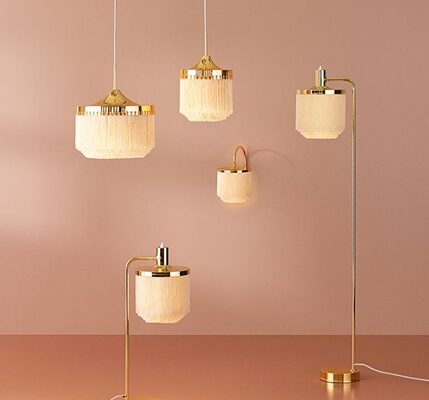Memphis Design Style: The Classic Trends
The significant postmodern Memphis Design Style is originated from the renowned Memphis Design collective formed by designers based in Milan during the early 1980s. Known for its vibrant colors, juxtaposing patterns, and unconventional design approach, Memphis Design garnered both admiration and criticism for its boldness. Presently, it is featured in museum retrospectives and serves as a muse for contemporary designers.

Memphis Design emerged as a response to the sleek, linear aesthetic of mid-century modern design from the 1950s-60s and the minimalism of the 1970s. Infused with ornamental elements inspired by pop culture and historical references, it presented a departure from the prevailing design trends of its time.
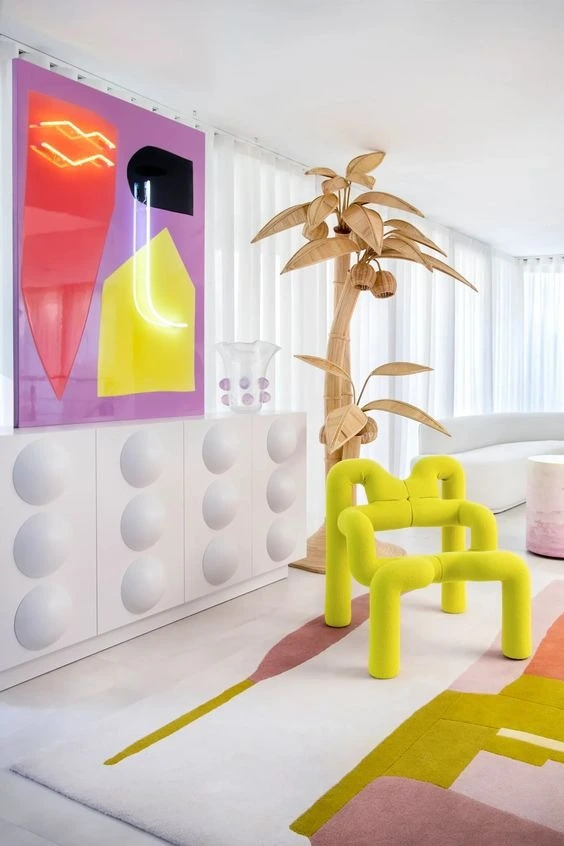
Ettore Sottsass, a key figure in the movement, was influenced by the Radical Design and anti-design movements in Italy during the 1960s. His early creations, such as sculptural furniture referred to as “totems,” are now displayed in renowned international museums, including the Met in New York City.
The aesthetic of Memphis Design drew inspiration from the revived interest in the 1920s Art Deco movement and midcentury Pop Art, both popular styles in the 1980s. Additionally, it incorporated a touch of 1950s kitsch. While some people found Memphis Design delightful, others deemed it garish.
Memphis Interior Living Room
Interior of living room is flawlessly combines modern elements with the distinctive Memphis design style. The dynamic fusion of bold colors and geometric patterns against the industrial setting establishes an eclectic atmosphere. Every decorative element harmonizes with the room’s lively ambiance, transforming it into a trendy, up-to-date retreat that’s both welcoming and visually engaging. It’s a tribute to Memphis design in an urban living setting.
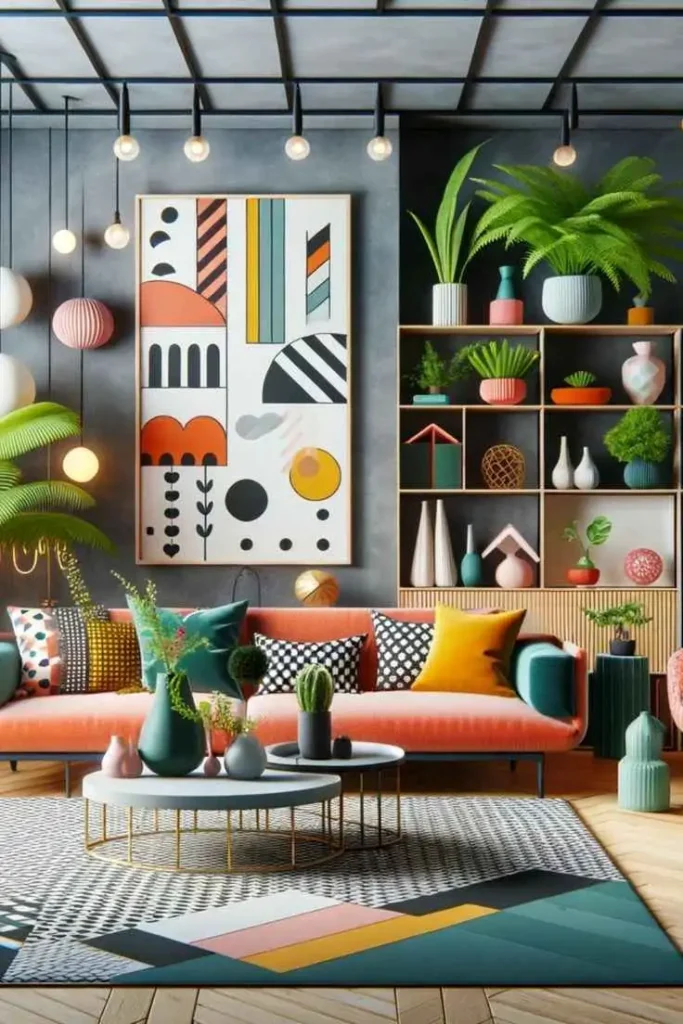
Memphis design bedroom
A colorful and creative bedroom with memphis style interior. The bedroom is like a canvas for showing off cool ideas, with a bold and vibrant Memphis style wall art that grabs your attention and brings energy to the room. The clean white bed stands out against the colorful wall and is decorated with patterned bedding and colorful pillows that match the playful design. Some green plants add a touch of nature to the modern look, and special decor items take inspiration from the iconic style.
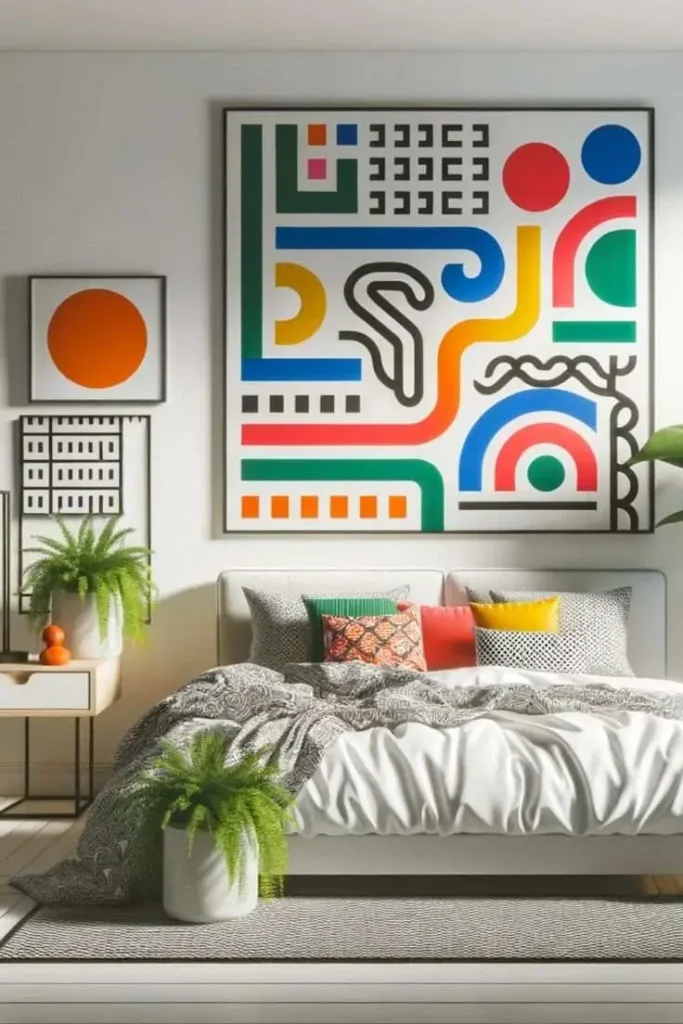
Memphis design dining room
Various geometrical shapes in different colors are creating a cheerful atmosphere in the dining room. The blue color of the cushions complements the shapes and looks great. The yellow color on the wall and the natural wood color are brightening up the space, keeping it lively and appealing for onlookers.
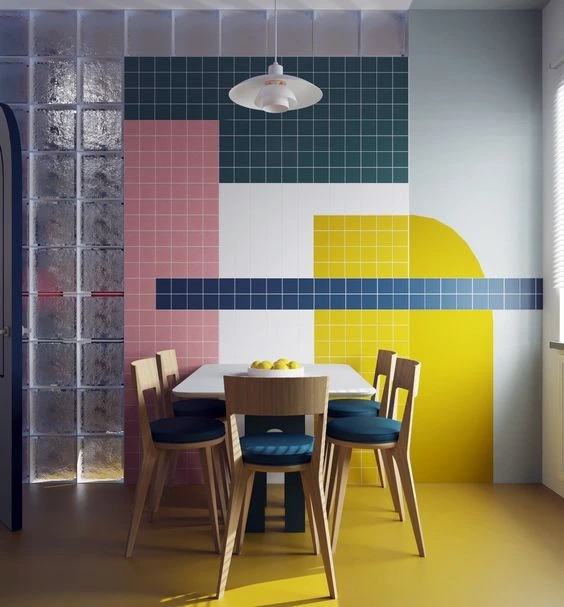
Memphis design Bathroom
Memphis art adorning the walls enhances the beauty of the vibrant bathroom. The vivid colors are captivating and irresistible, making it the perfect spot for a stylish Memphis design bathroom selfie.
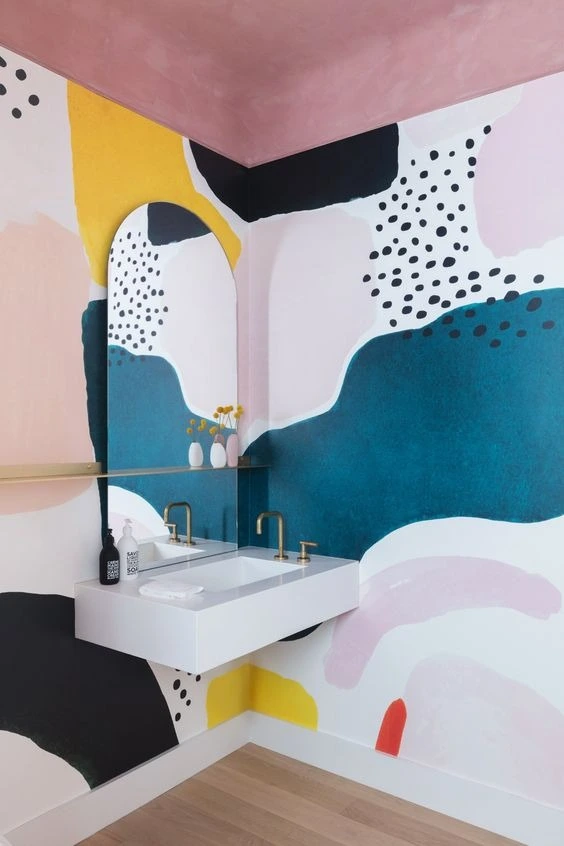
Distinctive Features of Memphis Design
- Challenged traditional notions of what is considered tasteful.
- Went against the established Bauhaus design principle that prioritizes function over form.
- Crafted to elicit an emotional reaction.
- Bold, vibrant, lively, playful, and unrestrained in expression.
- Embraced bright colors in unconventional pairings.
- Deliberately employed striking and conflicting patterns.
- Utilized simple geometric shapes.
- Incorporated black-and-white graphics.
- Rounded edges and curves were favored.
- Showed a preference for quirky squiggles.
- Utilized materials like terrazzo and plastic laminate in various finishes.
- Subverted expectations by using unconventional shapes, such as round legs for tables, instead of conventional ones.

History of Memphis Design
Sottsass and his collaborators ventured into the realm of design, creating a diverse range of items such as decorative metal and glass objects, home accessories, ceramics, lighting, textiles, furniture, buildings, interiors, and brand identities. Their creations were characterized by their unexpected, playful, and rule-breaking nature. Additionally, they were imbued with an idealistic aspiration to contribute to making the world a better place.
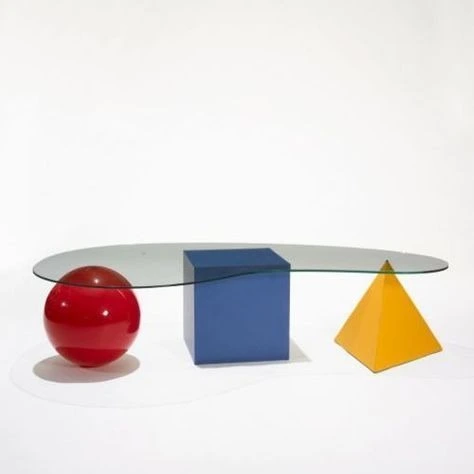
However, despite its influence, the movement was relatively short-lived, disbanding in 1988. In 1996, Alberto Bianchi Albrici acquired the Memphis-Milano brand and has since been dedicated to producing the original designs from the collective’s 1980s era.
Is Memphis Design Experiencing a Revival?
With the resurgence of nostalgia for 80s fashion, Memphis Design is not just confined to museum retrospectives; it has become a major source of inspiration for a diverse range of designers. This includes established fashion houses like Christian Dior and Missoni, as well as emerging talents in fields such as interior design, typography, costume design, and beyond.
Which Memphis Design piece stands out the most?
The Carlton room divider or bookcase takes the crown as the most iconic Memphis Design item. Created in 1981 by the movement’s founder, Italian architect Ettore Sottsass, this luxurious piece showcases a vibrant array of multicolored shapes crafted from affordable materials like MDF and plastic laminate.

What distinguishes Memphis Design from the rest?
Memphis Design is distinct for its daring combination of vivid colors, conflicting patterns, and an audacious blend of styles. This unique approach makes it stand out from anything that preceded it and anything that has emerged since.
Why did Memphis Design come to an end?
Memphis Design didn’t appeal to everyone’s taste, leading to its decline before the 1980s came to a close. The movement lost momentum when its founder, Sottsass, departed in 1985, and several key designers pursued individual careers after the collective disbanded for good in 1988.



